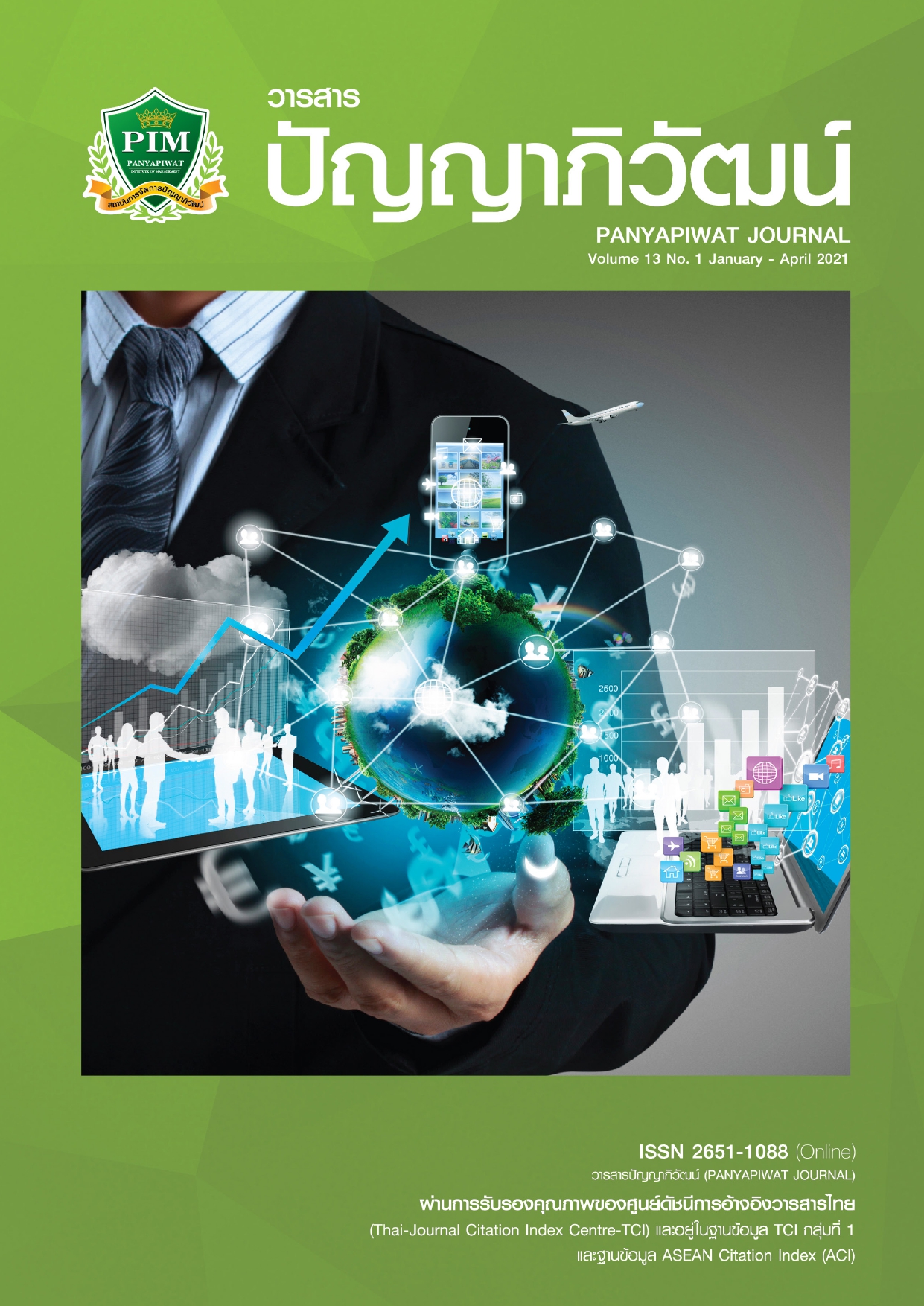THE PROPRIETY AND POSSIBILITY OF AN EVALUATION MODEL FOR UNDERGRADUATE VOCATIONAL PROGRAMS: AN APPLICATION OF MULTIPLE EVALUATION APPROACHES
Main Article Content
Abstract
This study aims to examine the appropriateness and feasibility of an evaluation model for undergraduate vocational programs: an application of multiple evaluation approaches. The evaluation model has been developed to respond to the problems and information needs of the program evaluation with the use of the following evaluation approaches: (1) utilizationfocused evaluation; (2) CIPIEST model; and (3) discrepancy evaluation. The key research informants comprised two groups: the first group consisting of 9 instructors responsible for the program and the second group consisting of 9 experts on curriculum and instruction, educational measurement and evaluation, and vocational education programs at the bachelor degree level. The research tools consisted of a critiques recording form, a 3-level rating scale assessment form, and a 5-level rating scale assessment form. The statistics used for data analysis were the item-objective congruence index (IOC), mean, and standard deviation.
The study results showed that (1) all 60 assessment items were consistent with the indicators and the assessment components based on all IOC index consideration criteria; (2) the rating means of appropriateness of the assessment model were at the high to highest levels, with the most appropriate items being those for the input component and the impact component with the rating means of 4.89; while the rating means for feasibility of implementation of the assessment model were also at the high to highest levels, with the most feasible item being that on writing program evaluation report with the rating mean of 4.78.
Article Details
I and co-author(s) certify that articles of this proposal had not yet been published and is not in the process of publication in journals or other published sources. I and co-author accept the rules of the manuscript consideration. Both agree that the editors have the right to consider and make recommendations to the appropriate source. With this rights offering articles that have been published to Panyapiwat Institute of Management. If there is a claim of copyright infringement on the part of the text or graphics that appear in the article. I and co-author(s) agree on sole responsibility.
References
Bledsoe, K. L. & Graham, J. A. (2005). The Use of Multiple Evaluation Approaches in Program Evaluation. American Journal of Evaluation, 26(3), 302-319.
Hansen, M. B. & Vedung, E. (2005). Evaluation of a Standardized Classification System. Odense, Denmark: Syddansk Universitesforlag.
Kanjanawasee, S. (n. d.). Curriculum Evaluation: Principles and Practices. Retrieved September 27, 2015, from http://www.edu.tsu.ac.th/major/eva/files/journal/scan1.pdf [in Thai]
Kanjanawasee, S. (2019). Evaluation Theory (9th ed.). Bangkok: Chulalongkorn University Press. [in Thai]
Kanjanawasee, S. (2015). The Modified CIPP: Conception, Transformation, and Development. Journal of Education Rajabhat Maha Sarakham University, 12(2), 11-20. [in Thai]
Kraikunasai, J., Chongcharoen, K., Ngudgratoke, S., & Pukchanka, P. (2017). A Causal Model of Administrative Factors Affecting Educational Quality in Vocational Schools. Panyapiwat Journal, 9(2), 171-184. [in Thai]
Office of Higher Education Commission. (2014). Handbook of Internal Education Quality Assurance: Higher Education Bangkok: Parbpim Co., Ltd. [in Thai]
Ornstein, A. C. & Hunkins, F. (2004). Curriculum foundations: Principles and theory (4th ed). Boston: Allyn and Bacon.
Pantrakool, S., Tumnanchit, B., & Pijitkamnerd, B. (2019). The Evaluation of the Library and Information Sciences Curriculum for the Essential Skills Development of the Librarians in the 21st Century. Panyapiwat Journal, 11(1), 221-233. [in Thai]
Patton, M. Q. (2013). Utilization–Focused Evaluation (U-FE) Checklist. Retrieved December 23, 2016, from https://wmich.edu/sites/default/files/attachments/u350/2014 UFE_checklist_2013. pdf
Patphol, M. (2015). Curriculum Assessment for Learning and Development (3rd ed.). Bangkok:
Charansanitwong Printing Co., Ltd. [in Thai]
Provus, M. (1971). Discrepancy Evaluation for Educational Program Improvement and Assessment. Berkeley, California, U.S.: McCutchan Pub. Corp.
Ritjaroon, P. (2015). Curriculum Evaluation: Approaches, Procedures, and Its Utility. STOU Education Journal, 8(1), 13-28. [in Thai]
Srisa-ard, B. (2003). Curriculum Development and Curriculum Research. Bangkok: Suweerisarn. [in Thai]
Stufflebeam, D. L. (2007). CIPP Evaluation Model Checklist: A Tool for Applying the CIPP Model to Assess Projects and Programs. Retrieved August 31, 2019, from https://wmich.edu/sites/default/files/attachments/u350/2014/cippchecklist_mar07.pdf


